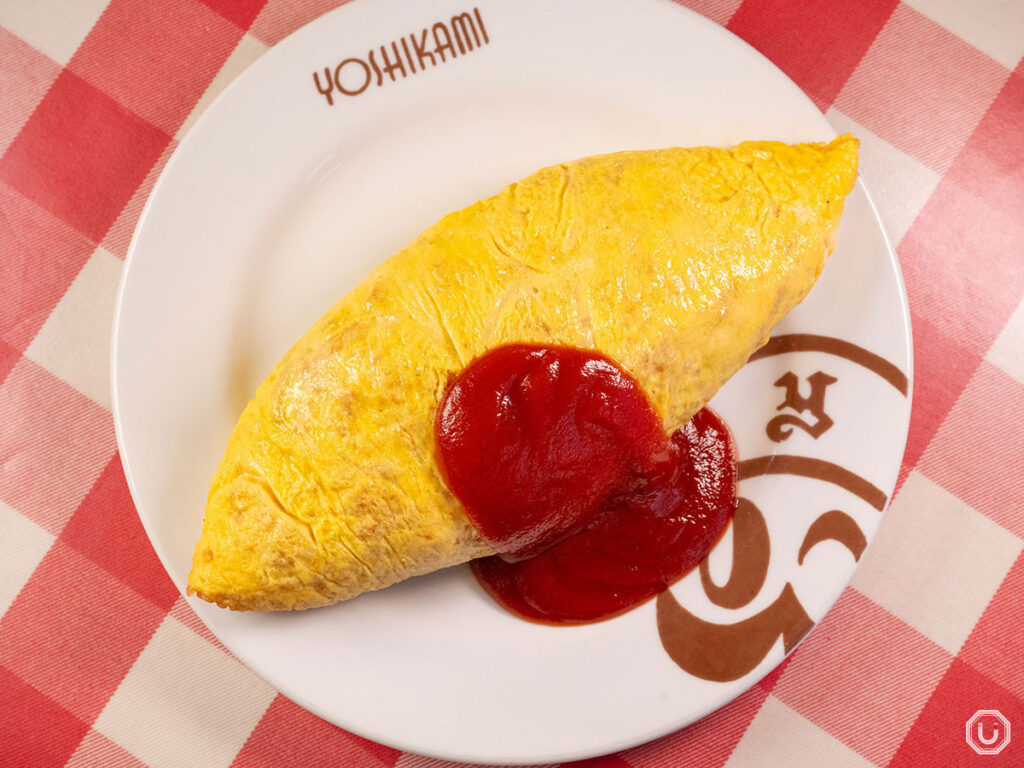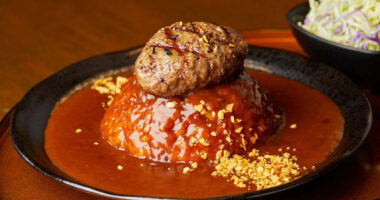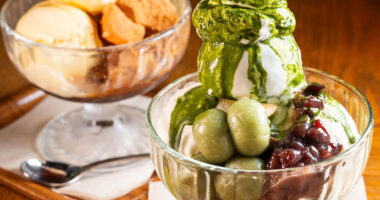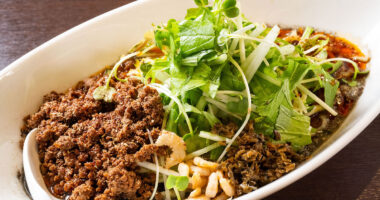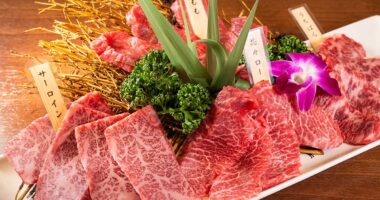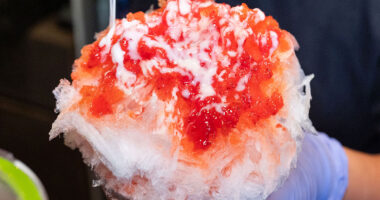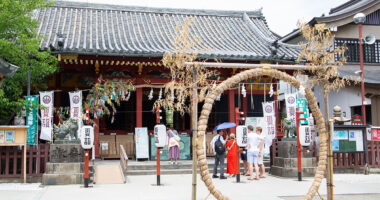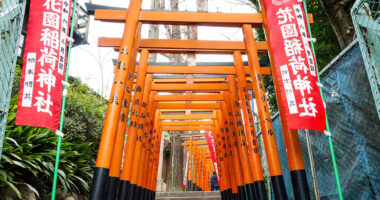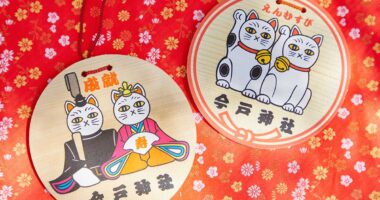When traveling in Japan, you may come across a food category called yōshoku (Western-style Japanese cuisine).
Yoshoku refers to dishes that originated overseas but have been uniquely adapted to suit Japanese tastes.
It became popular during the Meiji era (1868–1912), when Western culture began flowing into Japan, and has since evolved to include classics like hamburger steak, curry rice, and Napolitan spaghetti—now staples in Japanese homes and restaurants.
One of the most beloved examples is omurice: a fluffy omelet wrapped around seasoned rice. The sweet and tangy taste and aroma of ketchup draw you in, and with the first bite, a comforting flavor spreads across your palate.
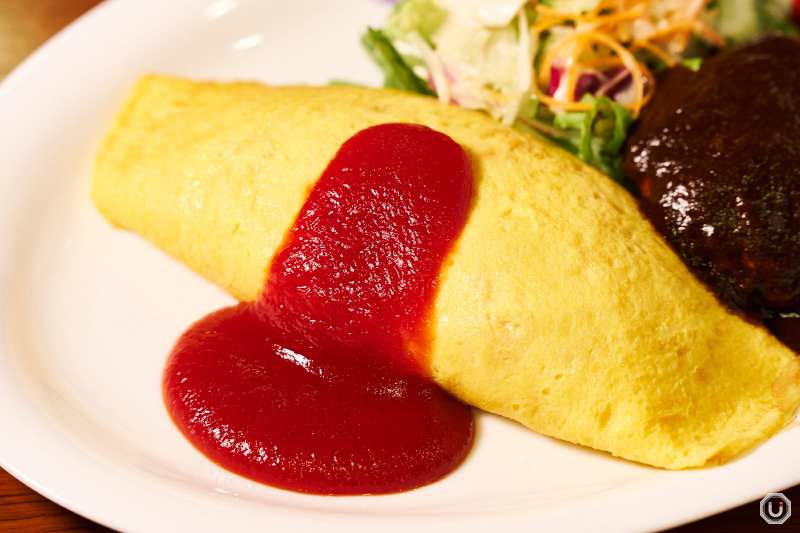
Omurice at Sandaime Taimeiken in Ueno
Although it looks Western in presentation, it’s a mysterious dish that has undergone a uniquely Japanese evolution.
Whether at a neighborhood cafe, an old-fashioned yoshoku restaurant, or a spot you stumble into mid-journey, the omurice you encounter will likely become an unforgettable taste.
What is omurice? Ingredients and seasonings
As mentioned earlier, omurice is a Western-style dish originating in Japan, made by seasoning fried rice and wrapping it in a fluffy omelet.
The classic style consists of ketchup-seasoned rice wrapped in a thin omelet, either soft and creamy or cooked through.
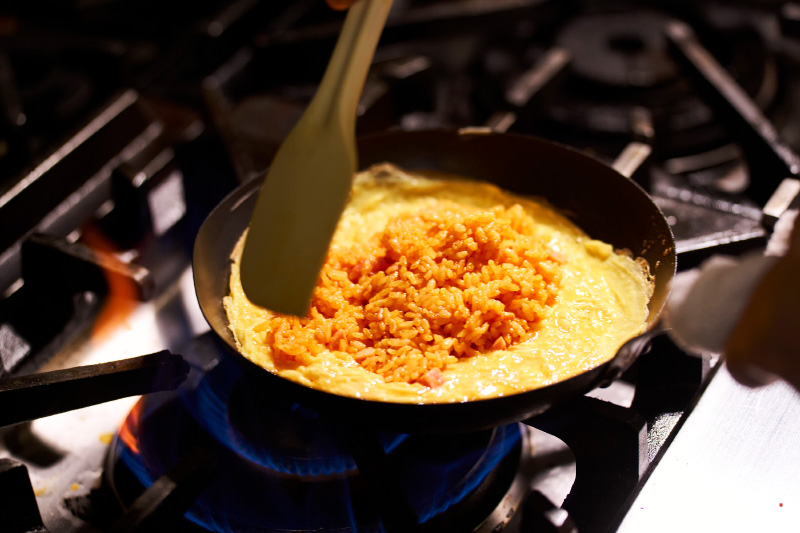
Omurice at Sandaime Taimeiken in Ueno
Common ingredients used in the rice include chicken, onions, and green peppers, though recipes vary widely from home to home and restaurant to restaurant.
In recent years, variations have expanded beyond the classic ketchup rice to include options like butter rice or garlic rice.
The flavoring is carefully chosen to create a strong impression, an appealing appearance, and—most importantly—perfect harmony with the eggs, allowing each restaurant to showcase its unique touch.
Simple yet deeply satisfying, omurice is loved by many.
Origins of omurice
There are several theories about the origins of omurice, but it is generally believed to be a dish that was born in Japan during the Taishō era.
One of the most famous stories traces it back to “Panya no Shokudo,” the predecessor of the long-established Western-style restaurant “Hokkyokusei” in Osaka. It is said that the dish was first created there for a regular customer who was feeling unwell—combining an easy-to-digest omelet with chicken rice.
There are also records that “Rengatei,” a restaurant in Ginza, Tokyo, served a dish called “rice omelet,” consisting of fried rice wrapped in a thin omelet, leading some to believe this was the true origin.
In either case, while influenced by Western cuisine, omurice was adapted to suit Japanese tastes and food culture, evolving into a distinctly Japanese dish.
Types of omurice sauces
One of the joys of omurice is its variety of sauces. In addition to the classic ketchup, sauces such as tomato, demi-glace, curry, cream, and cheese each give the dish an entirely different personality.
In Tokyo restaurants, uniquely crafted sauces embody each establishment’s character.
Ketchup sauce omurice
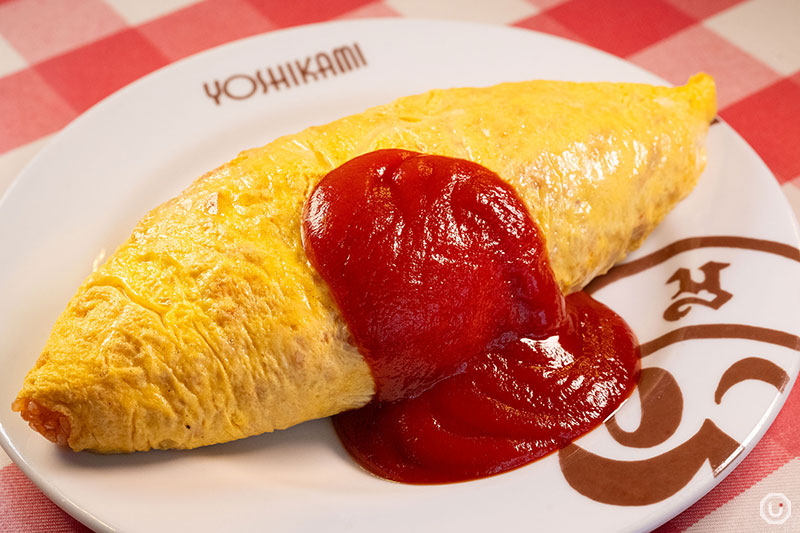
Omurice at Yoshikami
First, the classic ketchup sauce is a longtime staple. At the long-established yoshoku restaurant “Yoshikami” in Asakusa, fluffy omelets are placed atop well-fried ketchup rice, creating a simple, nostalgic dish.
Tomato sauce omurice
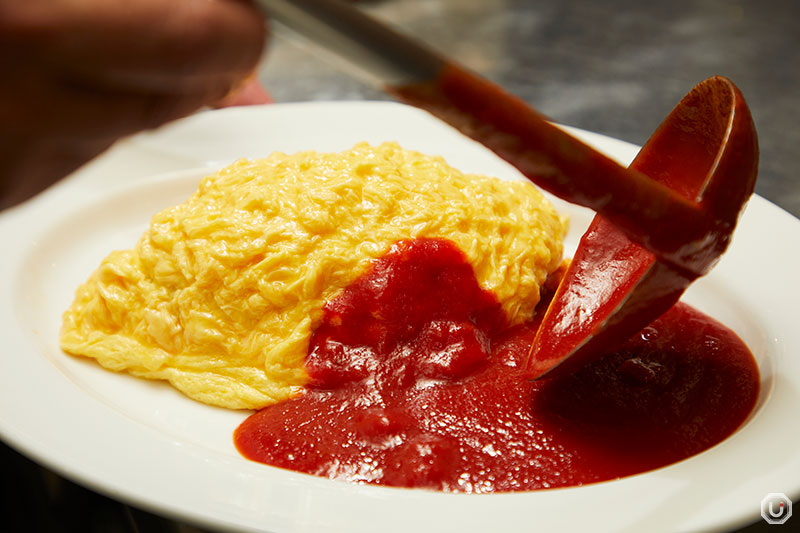
Omurice at Sudacho Shokudo Akihabara UDX in Akihabara
For those who want to enjoy a fresh aftertaste, omurice with tomato sauce is recommended. At “Sudacho Shokudo Akihabara UDX,” their homemade tomato sauce is a point of pride. The sauce’s balanced tartness and sweetness creates a refined flavor.
Demi-glace sauce omurice
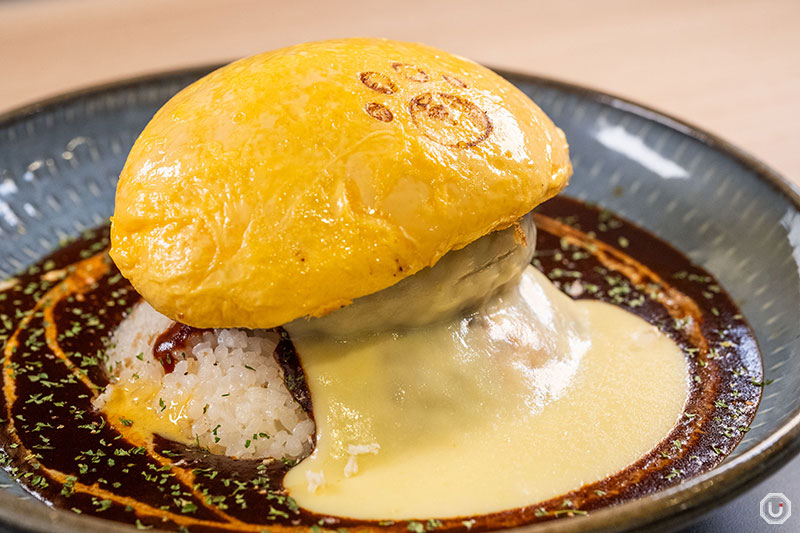
Omurice at Hamburger Steak and Omurice Shop Ikura Shibuya in Shibuya
If you’re looking for a rich and deep flavor, demi-glace sauce is the way to go. At “Hamburger Steak and Omurice Shop Ikura Shibuya” in Shibuya, the slowly simmered demi-glace sauce is generously poured over, creating a visually luxurious dish.
Curry sauce omurice
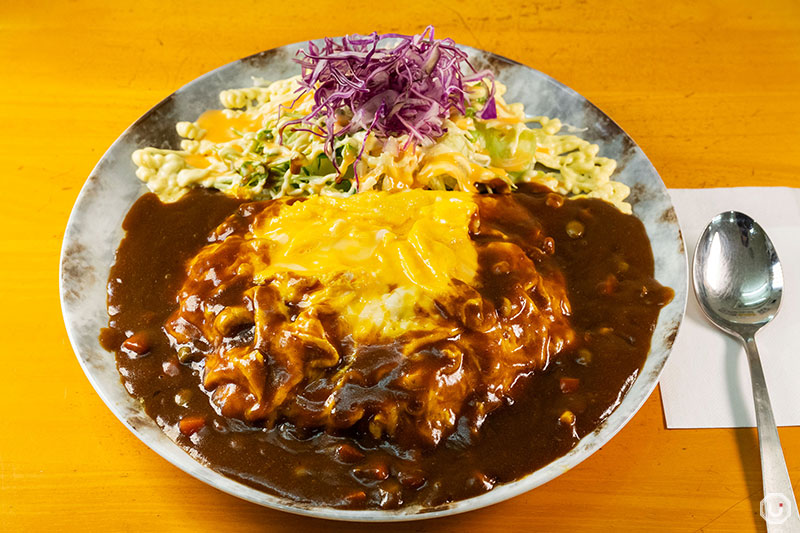
Omurice at Cafe de Raak
As a spicy twist, curry sauce is not to be missed. Although few restaurants offer curry sauce, it enjoys a loyal following for that very reason.
At “Cafe de Raak,” in Asakusa, the mildly spicy curry roux pairs perfectly with the omurice, delivering a satisfying flavor.
Cream sauce omurice
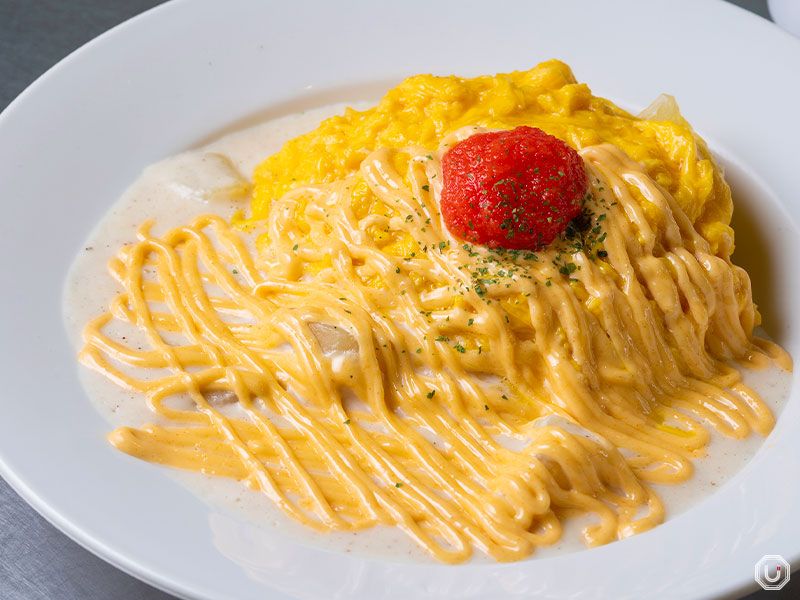
Seasoned cod roe potato mayonnaise cream rice omelet at Tamago Kitchen Harajuku Omu in Harajuku
Cream sauce-based omurice, which can take on many different forms depending on the variation, really showcases each restaurant’s distinct traits.
In particular, at “Tamago Kitchen Harajuku Omu,” a specialty omurice restaurant in Harajuku, you can enjoy their original sauce made with potatoes and béchamel sauce, which is particularly popular among female customers.
Cheese sauce omurice
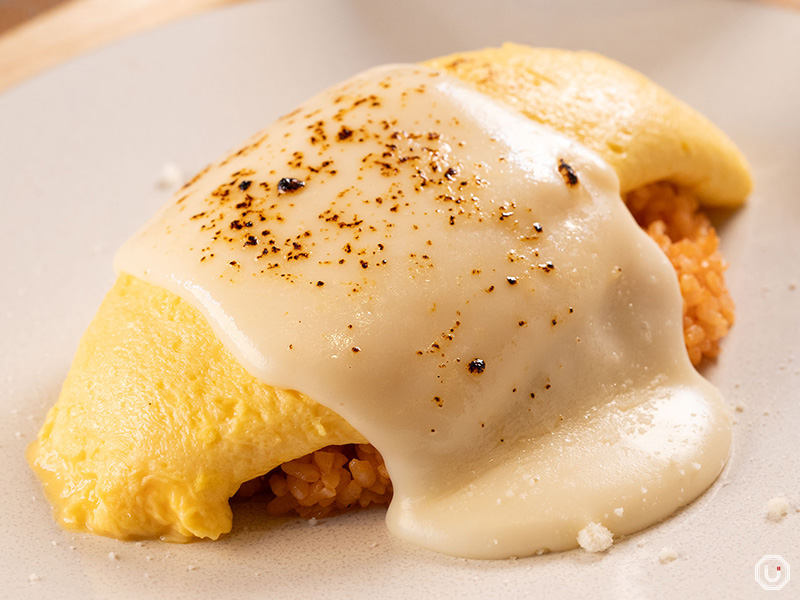
Omurice at Picoti Picota NIHOMBASHI Takashimaya S.C
Lastly, cheese sauce offers both richness and creaminess. At “Picoti Picota NIHOMBASHI Takashimaya S.C,” multiple cheeses are blended for depth, merging beautifully with the egg—an irresistible choice for cheese lovers.
Omurice variations: wrapped vs runny egg
Although simply called “omurice,” its styles are truly diverse. From the traditional wrapped type to innovative creations that are striking both in appearance and flavor, there are now many variations to enjoy.
The classic wrapped style omurice
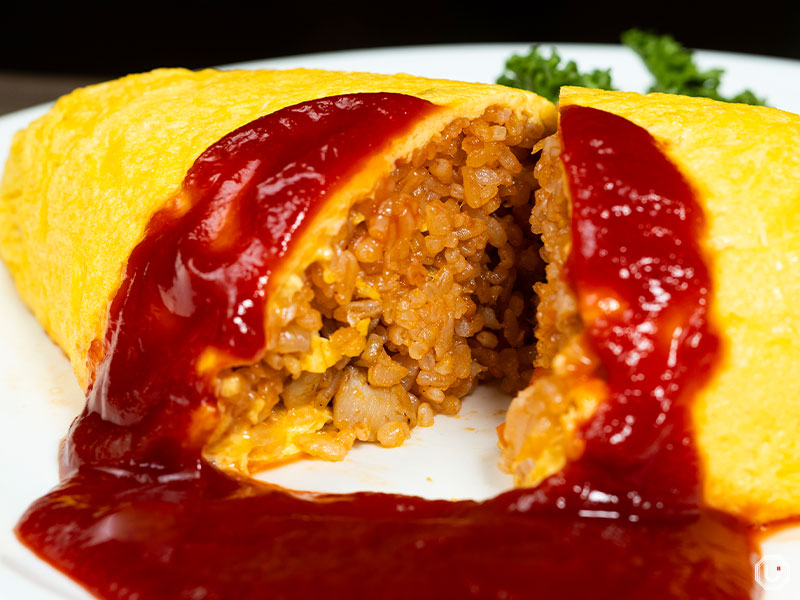
Omurice at Yoshoku Kurofunetei in Ueno
First, let’s take a look at classic wrapped-style omurice, where the rice is firmly enveloped in egg.
At the long-established Yoshoku restaurant “Yoshoku Kurofunetei” in Ueno, the omurice features a simple yet refined form with the vivid yellow of the egg contrasting against the deep red ketchup.
The moment you take a bite, the moist texture of the egg and its gentle umami spread, embodying a textbook and perfected flavor.
Runny egg style omurice
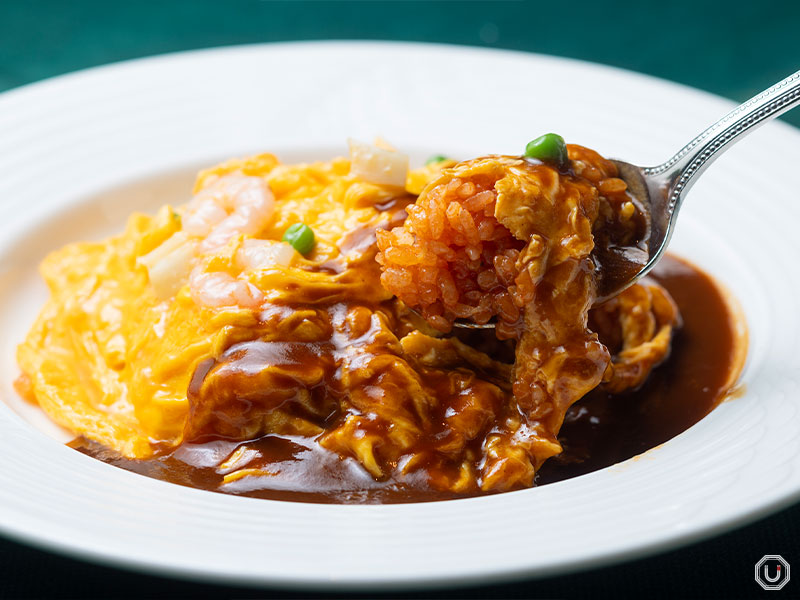
Omelette Rice Demi-glace at Grill Manten-boshi in Tokyo
On the other hand, a modern classic is the open-style omurice with soft, runny eggs.
At “Grill Manten-boshi,” located inside the Marunouchi Building directly connected to Tokyo Station, they use three eggs plus fresh cream to create a rich egg mixture, which is gently cooked with ingredients such as shrimp, scallops, and green peas.
The eggs used are additive-free and pesticide-free, raised free-range. Their rich yolks and natural flavor stand out, making for a simple yet indulgent dish.
Bonus feature: creative omurice types
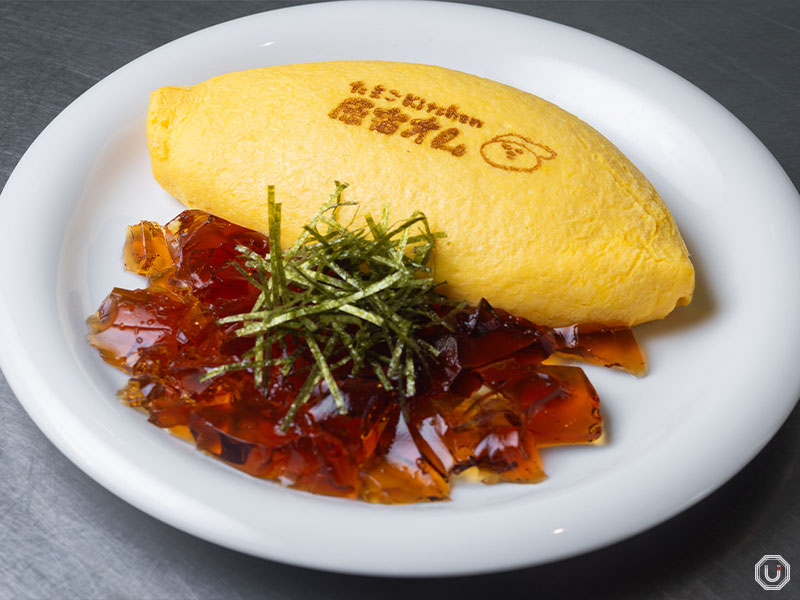
Japanese “raw egg rice” omelet (Roll) at Tamago Kitchen Harajuku Omu in Harajuku
One novel creative omurice gaining attention is the “Japanese ‘raw egg rice’ omelet (Roll)” served at Tamago Kitchen Harajuku Omu.
Instead of chicken rice inside, it uses white rice mixed with raw egg. However, the topping that acts as the sauce is truly unique.
The dashi soy sauce is made into a jelly, and it’s accompanied by shredded nori seaweed. When eaten together with the egg and rice, the umami of the dashi gently spreads across the palate, creating a fresh new style of Japanese-flavored omurice.
Bonus feature: omurice with an interactive presentation
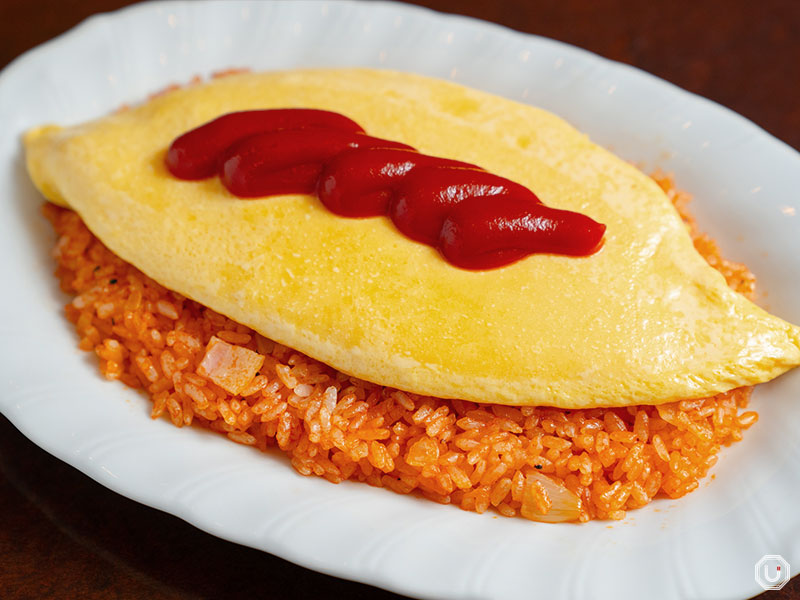
Omurice at Kissa You in Ginza
If you’re looking for omurice with striking visuals and entertainment value, the signature plate at “Kissa You” in Ginza is a must-try.
A fluffy, cloud-like omelet is placed atop ketchup rice, and when diners cut into it with a knife, the creamy eggs flow out smoothly.
The texture is so light and silky that it’s often called “drinkable omurice.”
Bonus feature: omurice customized with toppings
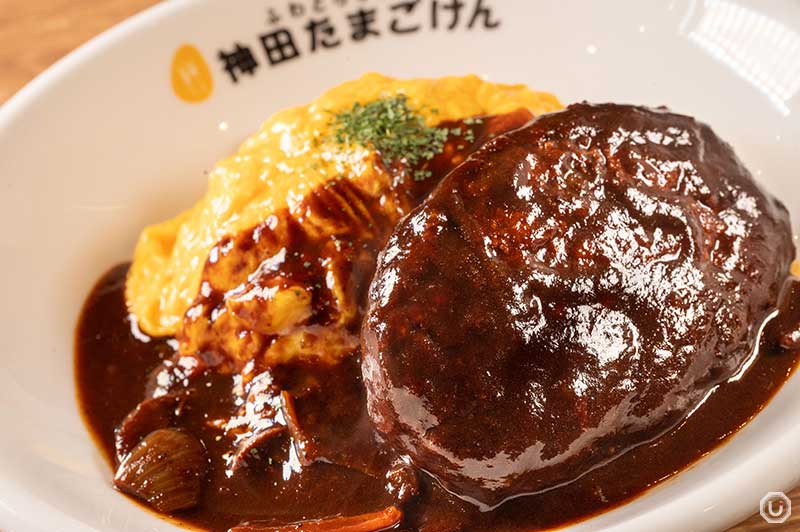
Omurice at Omurice at Kanda Tamagoken in Shinjuku
Additionally, customizing your omurice with toppings is also popular. At “Kanda Tamagoken” in Shinjuku, you can choose from a wide variety of toppings such as hamburger steak, beef tendon stew, fried shrimp, and karaage (Japanese fried chicken), allowing you to enjoy a hearty omurice tailored exactly to your preferences.
Omurice is one of the most emblematic dishes of Japan’s yoshoku cuisine, yet it also carries a homey feel with its comforting flavors.
Its visual appeal, the fluffy and creamy texture of the eggs, and the variety of sauces and rice preparations make it impossible to cover all its diverse qualities in just one sitting.
That’s precisely why it’s a dish you’ll want to enjoy again and again during your travels — it’s something easy to get hooked on.
For first-timers, the classic wrapped style combining ketchup sauce with chicken rice is recommended. Start by savoring this fundamental tasty style.
From there, trying variations like demi-glace, cream sauce, or the open style with gooey eggs makes for an enjoyable experience.
Omurice can be enjoyed at cafes, yoshoku restaurants, and specialty shops alike, each expressing its unique personality.
With many casual spots to drop into, it’s perfect for a quick visit while exploring. Embark on a journey to discover your favorite omurice!
※Menu items, prices, and store details are accurate as of August 2025.
Source : Omurice from Yoshikami
